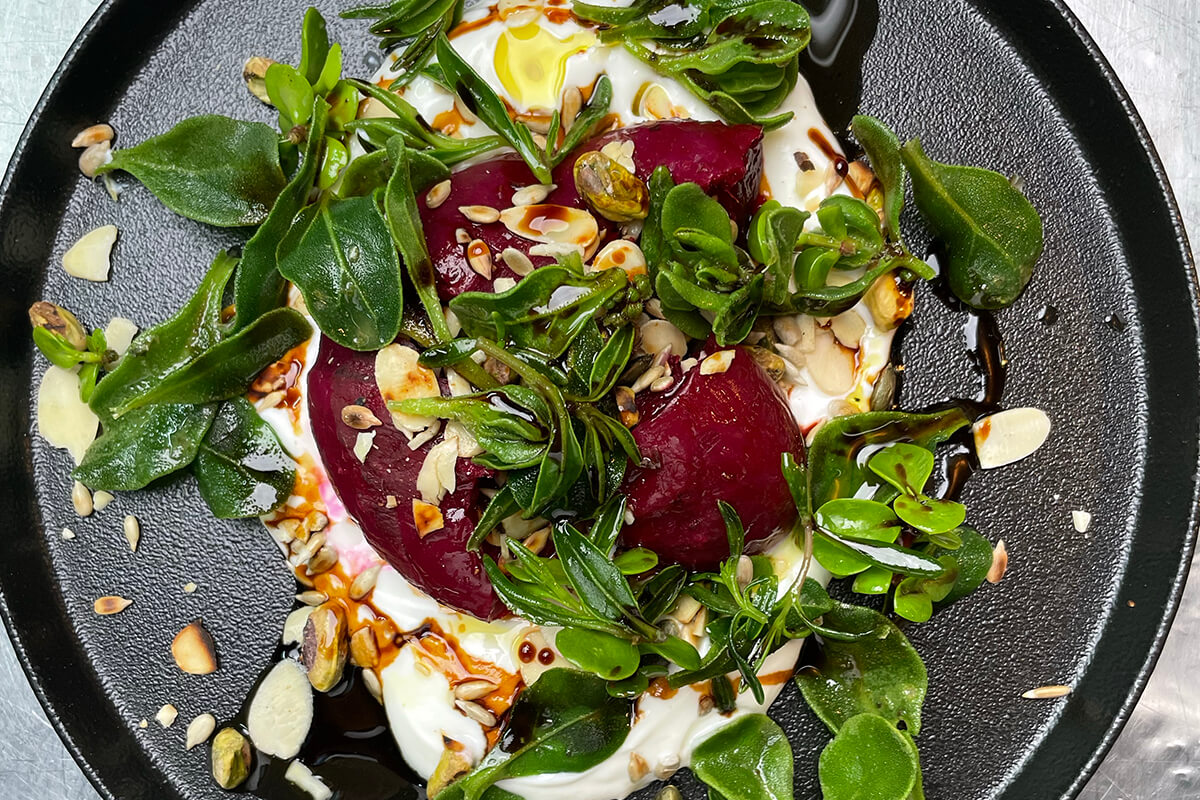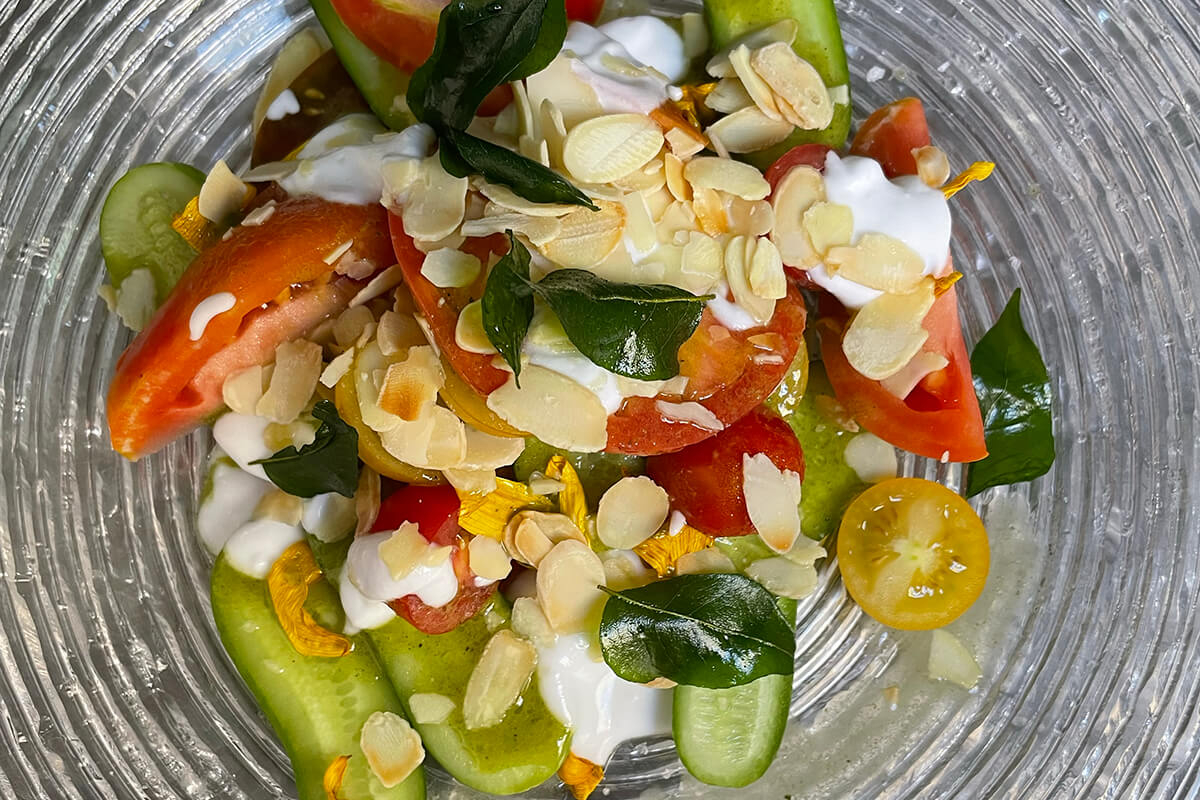EATING LOCAL IN SOUTH AFRICA

In 2018, Cape Town, South Africa, came this close to running out of water. At one point, residents were restricted to using 13 gallons per person, per day—enough for a 90-second shower, a half-gallon of drinking water, one full sink to wash dishes or laundry, and one toilet flush. Day Zero didn’t arrive, thanks to aggressive water conservation and much-needed rainfall, but the commitment to living more sustainably has stayed with the community.
One important practice is a new focus on indigenous species. In a country this drought-prone and vulnerable to climate change, a more resilient and sustainable food system is imperative. Micronutrient-rich plants have fueled the diets of Africa’s “First Nation”— the Khoikhoi and San people—for more than 200,000 years, as the Western Cape remains one of the most important centers of terrestrial biodiversity in the world, with a stunning array of forests, mountains, and coastal dunes.
One community member has made sustainable food supply her life’s work. Loubie Rusch founded the nonprofit organization The Local Wild Food Hub (local-wild.org) and has authored two books designed to introduce people to the Western Cape’s forgotten and neglected indigenous edibles: Cape Wild Foods: A Growers Guide and Cape Wild Foods: A Cooks Guide. The mission of Local Wild centers on the motto “Know, Grow, Use” to provide education about and increase access to the consumption of indigenous foods.

Rooibos, for example, South Africa’s famed red bush tea found in the Cederberg mountains, is rich in antioxidants and polyphenols that protect against free radical damage that can lead to diabetes, heart disease, and potentially cancer. A bounty of lesser-known edible plants blankets the coastline. These include succulents with charming names like ice plant (soutslaai), sun rose, and sea pumpkin. Fruits and vegetables include sandkool (long-stem broccoli), namakwakool (a wild cabbage), and slangbessie (which grows on a thorn bush and looks and tastes like a tiny tomato). Soutslaai has significant quantities of sodium, calcium, and micronutrients such as iron. Wild sorrel contains high levels of vitamin C.
Rusch acknowledges the challenge of convincing home cooks to forage for dinner and thus has made some influential partnerships. The chefs at Cape Town’s iconic Mount Nelson, A Belmond Hotel (belmond.com) have planted an indigenous garden and are featuring ingredients such as dune spinach, spekboom, sea pumpkin, and waterberry in mouthwatering menu options.
George Jardine, the hotel’s executive chef, welcomes the opportunity to entertain and educate his diners. “Our guests are intrigued by the names and tastes of leaves, berries, and seeds that they have never ever heard of before,” he says. “It’s exciting for us to introduce them to some of the indigenous plants that were growing in the Cape long, long before there were any settlers.”
For those on the fence about trying ancient food sources, Rusch will remind you that our ancestors found this diet incredibly nourishing. “Man became modern based on the foods that they were eating here. So quite obviously, they’re nutritious.” And when properly prepared, they’re also quite delicious.